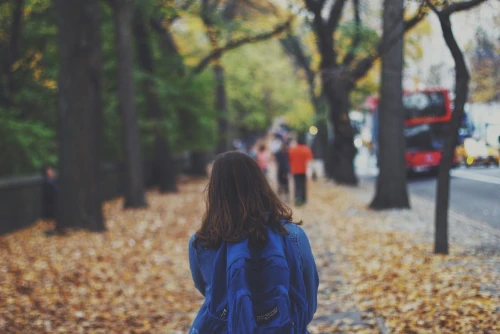It is reported that almost 75% of children in the age range of 8 to 12 years complain of back pain. Almost 5,000 children every year go to the emergency department for backpack injuries and more than 14,000 children are treated yearly for related problems. *
Why?
Dramatic changes in lifestyle over the years means we are seeing more children at the clinic with lower back pain. The most common cause of back pain is muscular strain, injury, or overuse.
It is important to note that back pain in a child that occurs immediately after an injury or event should be checked by an expert as soon as possible.
The good news is that there are some causes of lower back pain that can be avoided right now:
1. Too much sitting
The human body is not intended for prolonged sitting. Youngsters generally sit for longer periods of time now thanks to technology and lifestyle changes. The longer your child sits, the more they tend to slouch, which can lead to lower back pain.
2. Overloading your child’s bags
Over loading children’s backpacks / bags can lead to lower back pain. Carrying a heavy load on the back may distort the natural curves in the middle and lower back, causing muscle strain and irritation to the spine joints and the rib cage, which in turn can lead to rounding of the shoulders. In some cases your child may start to lean forward more which will impact on balance and likelihood of falling.
3. Not exercising enough
Most British schoolchildren are not getting the recommended 60 minutes of daily exercise for good health.
Only one in eight (13%) youngsters get the right amount of exercise, while 30% do less than an hour each week. (* source BHF)
55% of youngsters are spending an hour or more a day texting or chatting to their friends, or visiting social networking websites.
Movement repairs and nourishes the discs, ligaments, joints, and muscles in the spine. Lack of regular exercise can cause lower back pain by leading to weakness, stiffness, and de-conditioning of the spine even at a young age.
4. Obesity
If your child is overweight or obese, their chances of any muscle, joint, or tissue issue is increased. This is especially common with the back and spine. The weight that is carried around by an obese person puts additional strain and pressure on their back and spine.
5. Using the wrong pillow
A good pillow is essential for supporting a neutral spine and adapting to the body movements in the night. An ideal pillow should support both your child’s neck and back, keeping them at a natural angle.
A pillow that is too low will put unwanted strain on your child’s back and shoulder. In turn, a pillow that is too high will cause tension in their lower back area.
If you are unsure on anything, your local Osteopath will be able to advise.
*Source: The US Consumer Product Safety Commission

